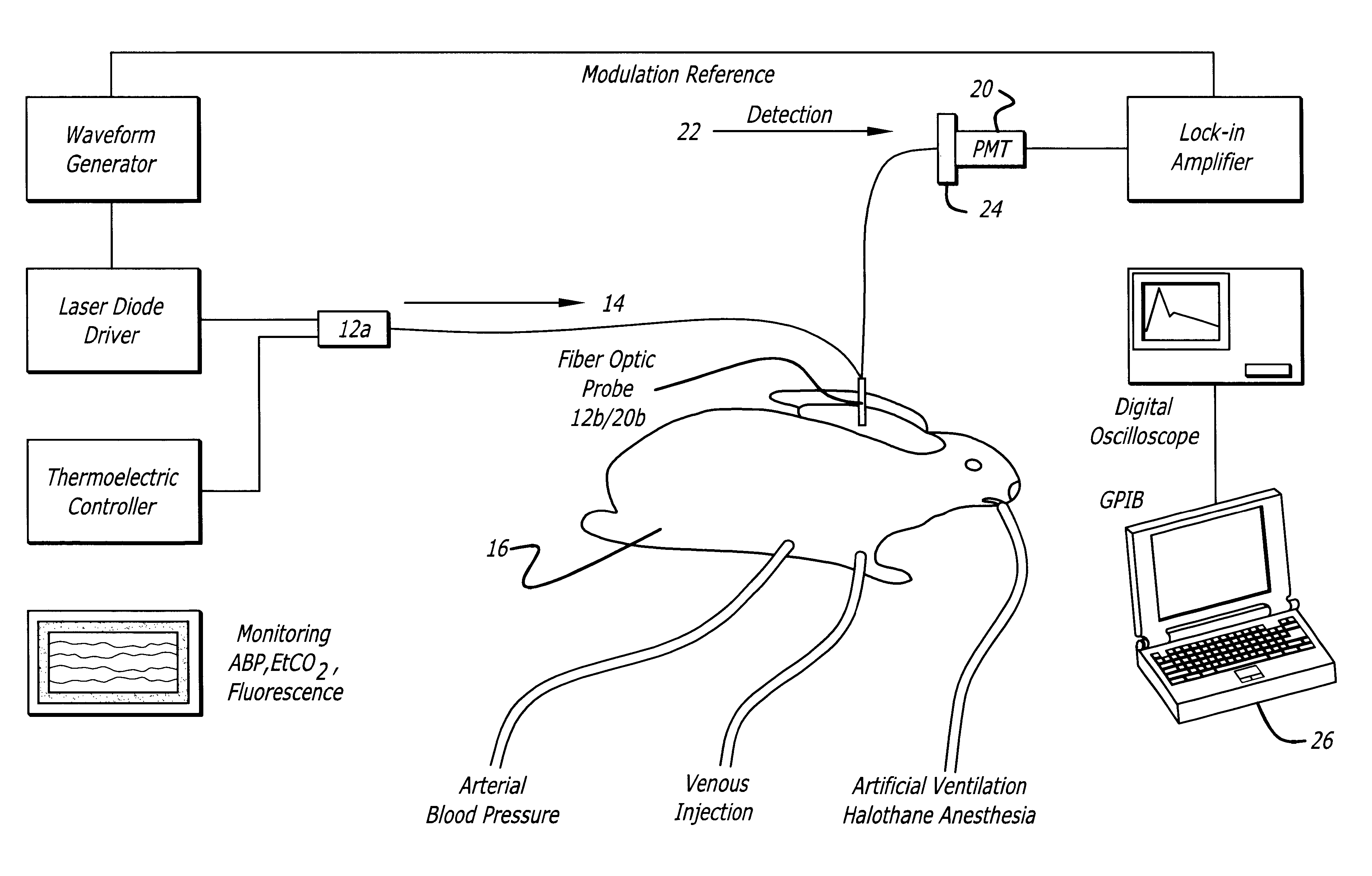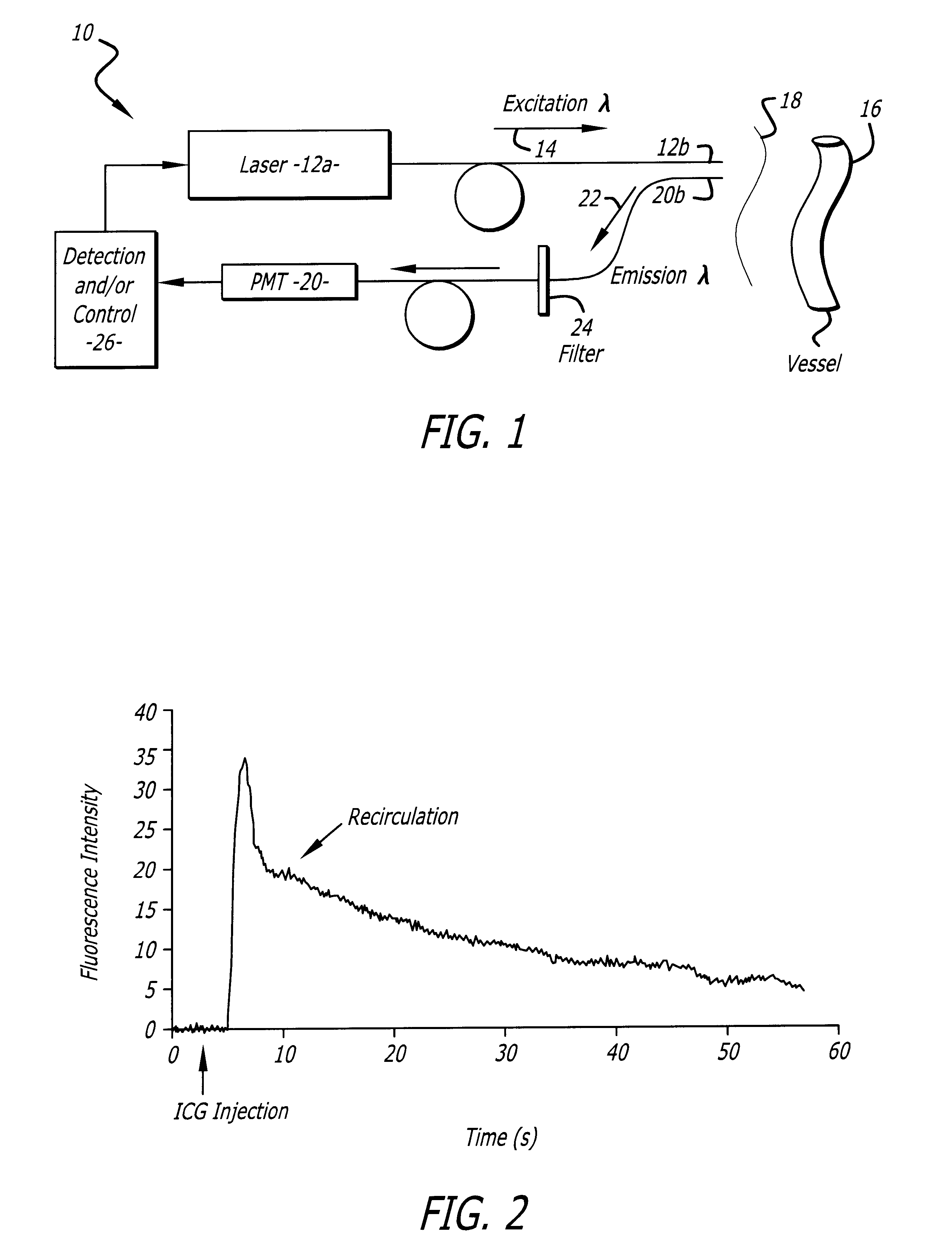Measurement of cardiac output and blood volume by non-invasive detection of indicator dilution
a non-invasive detection and cardiac output technology, applied in the field of cardiac output and blood volume measurement by non-invasive detection of indicator dilution, can solve the problem of minimal invasiveness, achieve the effect of improving system sensitivity or accuracy, reducing signal to noise, and improving system sensitivity
- Summary
- Abstract
- Description
- Claims
- Application Information
AI Technical Summary
Benefits of technology
Problems solved by technology
Method used
Image
Examples
example 2
A. A Sample Method and System for Measuring Cardiac Output and Blood Volume.
Experiments have been performed in New Zealand White rabbits (2.8-3.5 Kg) anesthetized with halothane and artificially ventilated with an oxygen-enriched gas mixture (FiO2.about.0.4) to achieve a Sa2above 99% and an end-tidal CO2between 28 and 32 mm Hg (FIG. 4). The left femoral artery was cannulated for measurement of the arterial blood pressure throughout the procedure. A small catheter was positioned in the left brachial vein to inject the indicator, ICG. Body temperature was maintained with a heat lamp.
Excitation of the ICG fluorescence was achieved with a 780 nm laser (LD head: Microlaser systems SRT-F780s.sup.-12) whose output was sinusoidally modulated at 2.8 KHz by modulation of the diode current at the level of the laser diode driver diode (LD Driver: Microlaser Systems CP 200) and operably connected to a thermoelectric controller (Microlaser Systems: CT15W). The near-infrared light output was forwa...
PUM
 Login to View More
Login to View More Abstract
Description
Claims
Application Information
 Login to View More
Login to View More - R&D
- Intellectual Property
- Life Sciences
- Materials
- Tech Scout
- Unparalleled Data Quality
- Higher Quality Content
- 60% Fewer Hallucinations
Browse by: Latest US Patents, China's latest patents, Technical Efficacy Thesaurus, Application Domain, Technology Topic, Popular Technical Reports.
© 2025 PatSnap. All rights reserved.Legal|Privacy policy|Modern Slavery Act Transparency Statement|Sitemap|About US| Contact US: help@patsnap.com



